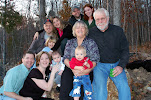Class Minutes 9/8/08 by James
Class Minutes
September 12, 2008
Class Facilitator: Don Wagner
Minute Taker: James T. Manzolillo
Attendees: Owen, Chris D., Megan T., Yumie, Nicole, Chris L., Dan, Amanda, Megan C., Sarah, Alyssa, Ben, Josh, Julie, Don, James
• Previous Class Minutes
o Everybody interprets the minutes differently; a way to read the minutes is to use observation, look for the meaning, and evaluate.
o We discussed the use of commas. The two main ways we will use commas is to insinuate a pause or to list a series.
o When preparing a public document read it aloud to yourself before submitting it. Reading aloud points out mistakes in the writing when the reader stumbles or trips up when reading the text.
o Semicolon use versus colon use was discussed. When using a semicolon two independent thoughts are linked together. When using a colon, a list usually comes after the colon use.
• Today’s Class Minutes
o Don proposed questions at the beginning of class for us to answer:
• What did you learn yesterday?
• What do you need to improve on?
• Who did you help out yesterday?
• If you did not help out anybody you need to do a kind, silent act to somebody.
o What is the definition of Twitter?
• Social messaging, micro-blogging with immediate feedback. 140 character blurbs at a time.
• “Welcome to your world, it may be a job qualification in the near future.” – Don
o Resumes
• Selling yourself on an 8 ½” x 11” page.
• Purpose of a resume is to communicate your professional skills and experience to employers or grants.
• It is a competitive world, thus your resume needs to grab the readers attention
• Musical chairs analogy
• A reviewer spends an average of 15 seconds looking at a resume the first time around.
• There are 3 types of resumes: chronological, functional, and thematic.
• We will be focusing on thematic resumes
• Thematic resumes are organized by taking themes directly from job descriptions.
o We read left to right and top to bottom; resumes should be in a kind of hierarchical order. (Professional skills at the top with the duties of the job highlighted and work experience toward the bottom).
o We should take words directly from the job description and put them into our resumes.
o There should be a balance of white space with black space.
o Assignments
• Find a job description for an occupation you are actually interested in and write a draft of a thematic resume using this job description.
• Write a 1 page narrative on the interview you conducted. (No more than 2 pages, 12 point font, 1 inch margins, and 1 bibliographic reference).
• Perform a kind, silent act for somebody.


2 Comments:
Excellent minutes. Great point that you should read aloud your public speech, to avoid stumbling over the words without proper punctuation. Great job James.
By Anonymous, at 6:42 PM
Anonymous, at 6:42 PM
Excellent minutes. Great point that you should read aloud your public speech, to avoid stumbling over the words without proper punctuation. Great job James.
By Anonymous, at 6:42 PM
Anonymous, at 6:42 PM
Post a Comment
<< Home